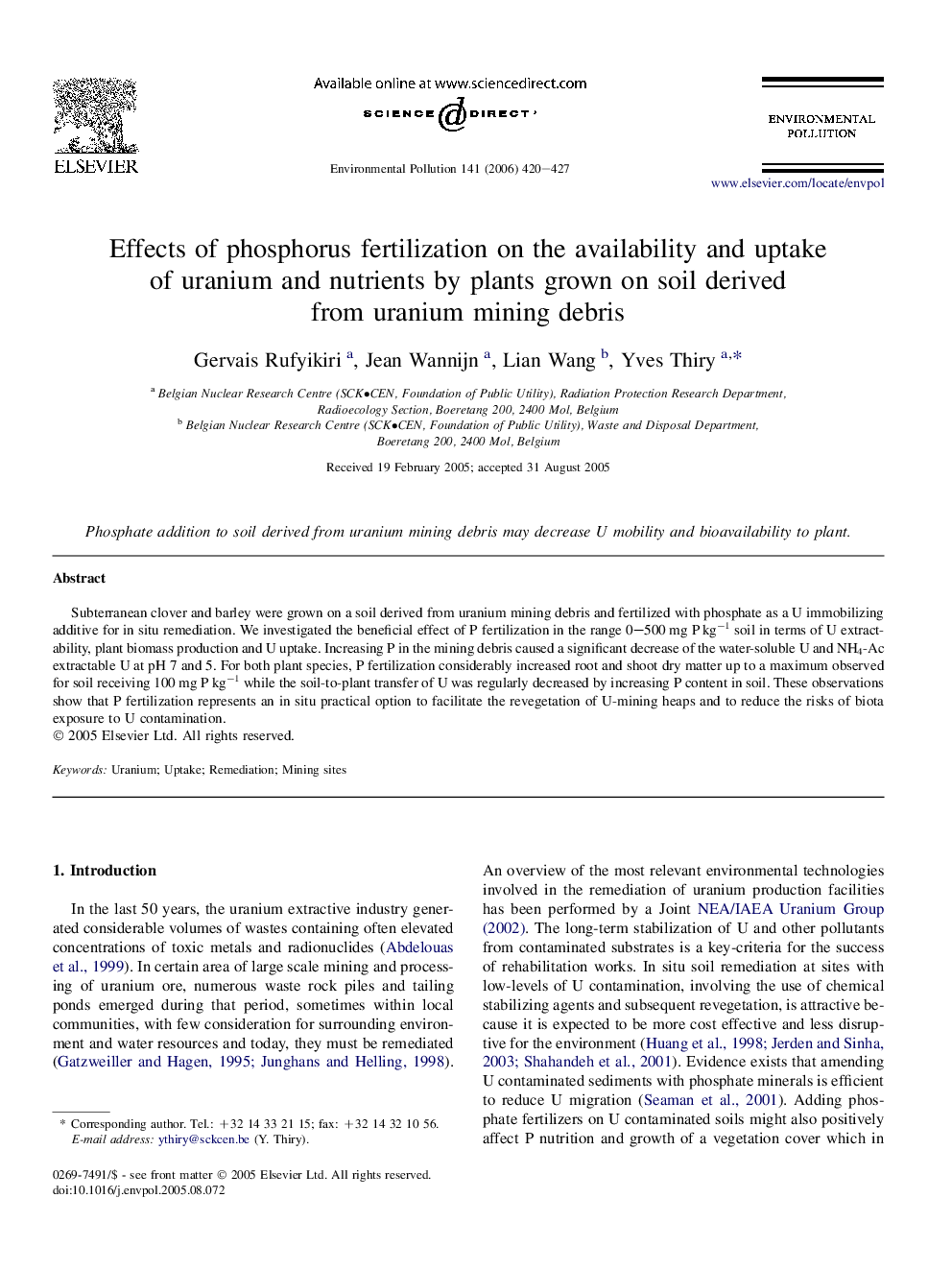| Article ID | Journal | Published Year | Pages | File Type |
|---|---|---|---|---|
| 4428051 | Environmental Pollution | 2006 | 8 Pages |
Subterranean clover and barley were grown on a soil derived from uranium mining debris and fertilized with phosphate as a U immobilizing additive for in situ remediation. We investigated the beneficial effect of P fertilization in the range 0–500 mg P kg−1 soil in terms of U extractability, plant biomass production and U uptake. Increasing P in the mining debris caused a significant decrease of the water-soluble U and NH4-Ac extractable U at pH 7 and 5. For both plant species, P fertilization considerably increased root and shoot dry matter up to a maximum observed for soil receiving 100 mg P kg−1 while the soil-to-plant transfer of U was regularly decreased by increasing P content in soil. These observations show that P fertilization represents an in situ practical option to facilitate the revegetation of U-mining heaps and to reduce the risks of biota exposure to U contamination.
